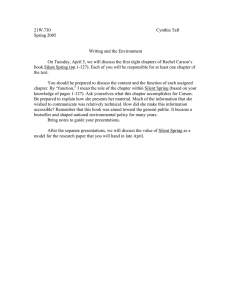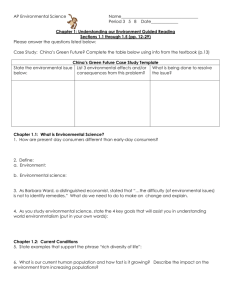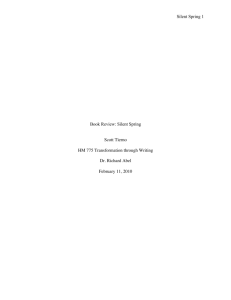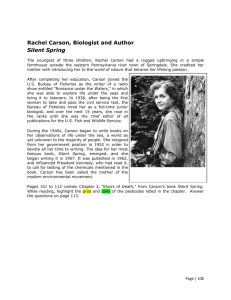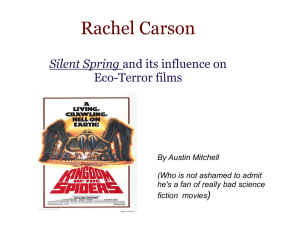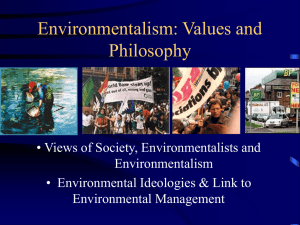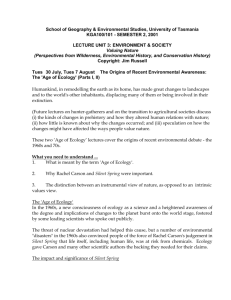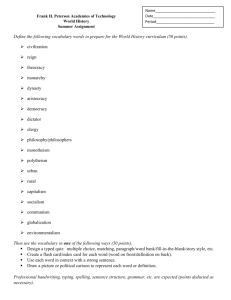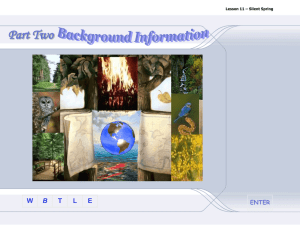silentspring
advertisement
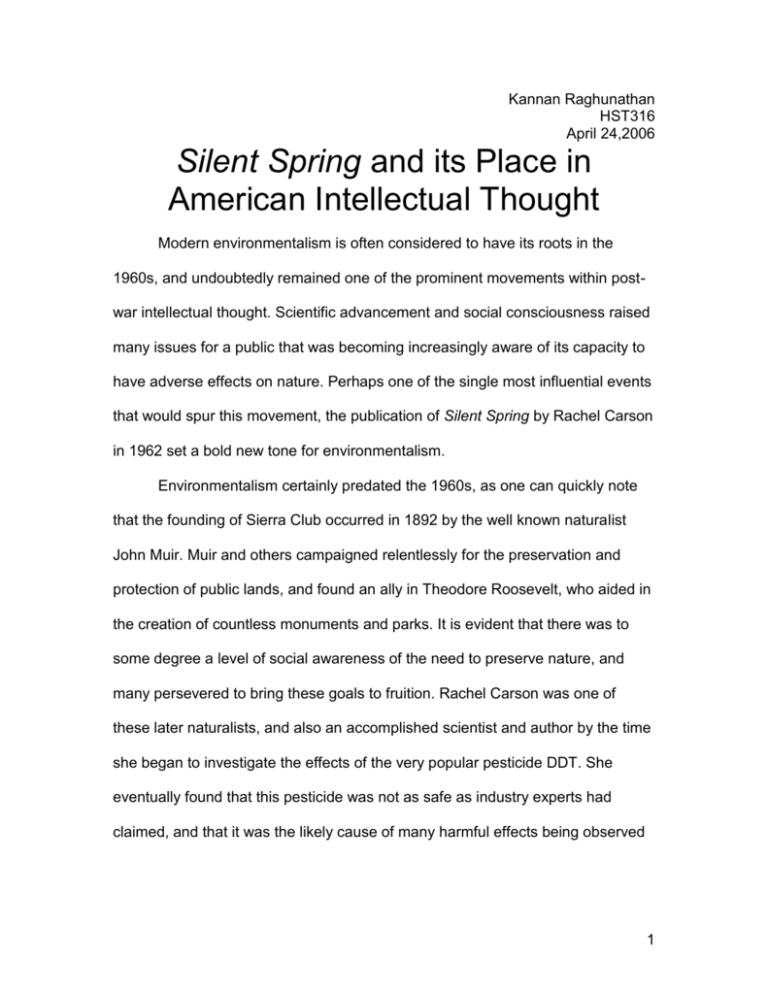
Kannan Raghunathan HST316 April 24,2006 Silent Spring and its Place in American Intellectual Thought Modern environmentalism is often considered to have its roots in the 1960s, and undoubtedly remained one of the prominent movements within postwar intellectual thought. Scientific advancement and social consciousness raised many issues for a public that was becoming increasingly aware of its capacity to have adverse effects on nature. Perhaps one of the single most influential events that would spur this movement, the publication of Silent Spring by Rachel Carson in 1962 set a bold new tone for environmentalism. Environmentalism certainly predated the 1960s, as one can quickly note that the founding of Sierra Club occurred in 1892 by the well known naturalist John Muir. Muir and others campaigned relentlessly for the preservation and protection of public lands, and found an ally in Theodore Roosevelt, who aided in the creation of countless monuments and parks. It is evident that there was to some degree a level of social awareness of the need to preserve nature, and many persevered to bring these goals to fruition. Rachel Carson was one of these later naturalists, and also an accomplished scientist and author by the time she began to investigate the effects of the very popular pesticide DDT. She eventually found that this pesticide was not as safe as industry experts had claimed, and that it was the likely cause of many harmful effects being observed 1 in various ecologies. To bring this to public light, she wrote Silent Spring, a controversial book for its time. Silent Spring was written with a wide audience in mind, as it begins with a fictional case study to make a reader curious about what was causing so much misfortune for a town. Such an introduction is a very useful implementation by Carson to draw in more readers, who may not have been previously inclined to otherwise follow this topic. Soon after, the reader receives the diagnosis, and it turns out that these problems are actually a consequence of environmental pollution and mismanagement, consequences that the town was not initially aware of. The plausibility of the scenario, and the capacity of the public to relate to this unsuspecting, unaware, and afflicted town undoubtedly raised social consciousness of a new dimension previously not thought of. Silent Spring is different from many other articles and naturalist works of its time in that it goes a step further and alludes to clear antagonists, namely the government and the chemical industry. This radically differed in tone from most other works up to that time, as Carson had effectively proposed an antagonistic relationship, with the public interest and nature on one side, and the industry and government on the other. This proposition was only aided by the caustic reaction that the industry had to her book, and the endless character attacks made on Carson herself. The public reaction to the work was far different from that of industry, as the resulting alarm would bring about the banning of DDT, and more stringent regulations on pesticides. Probably more important is the fact that the public was now 2 increasingly conscious of the consequences of recklessness in environmental protection, and there would be a growth of grassroots movements to oppose the indifferent entities that were seeking material gain at ecological cost. Sierra Club would soon raise the public awareness in its fight to prevent the government from flooding the famous Grand Canyon for a rather inconsequential dam1, and apply similar campaigns to fight the destruction of other natural treasures by exposing the shortsightedness of such plans. Within the next decade, scientists Mario Molina and Sherwood Rowland would expose the danger of chlorofluorocarbons(CFC) to the ozone layer, which up until now had been deceptively marketed by the chemical industry as safe enough to even ingest. Public outcry over CFCs would eventually lead to legislation to regulate, curtail and eventually end their use. This was in many ways the new face of environmentalism. It had evolved significantly from being merely an acknowledgement of the importance of nature, the virtues of preservation of beautiful treasures, and gradual progress towards these goals in cooperation with authorities. Now, environmentalism also picked up the uneasy idea that forces were currently at work, trying to benefit themselves with complete disregard to the greater environmental good, and that these forces must be immediately stopped. As Carson would portray in Silent Spring, it could be conceived by the environmentalist movement that the disregard for the environment wasn’t an accident or a temporary error in judgement, rather the inherent characteristics of an entity whose lone purpose 3 was to turn profits, and a government that was in some ways obligated to appease these interests. The work further propagated the mindset that consequences of poor environmental decisions were not merely distant effects that would have cosmetic impact on places far away, but rather harsh results that the general public itself could feel. Furthermore, ecosystems did not adhere to political boundaries, and the consequences of one group’s carelessness could be suffered by another, a further need for careful regulation. Thus, while naturalism and a degree of awareness of the environment can be traced back to far earlier times, modern environmentalism and its perception of a constant struggle between economic, political and ecological interests in many ways finds its heritage in Silent Spring. In contemporary times, the environmentalist movement find itself struggling with issues of proper nuclear waste disposal, sustainable energy forms, the impact of greenhouse gases released into the atmosphere, and many other causes. Certainly, the legacy of Silent Spring is still perceivable. Bibliography 1. Brower, David R., “Let the River Run Through It.” Sierra Magazine March/April (1997): 14-18. 4
